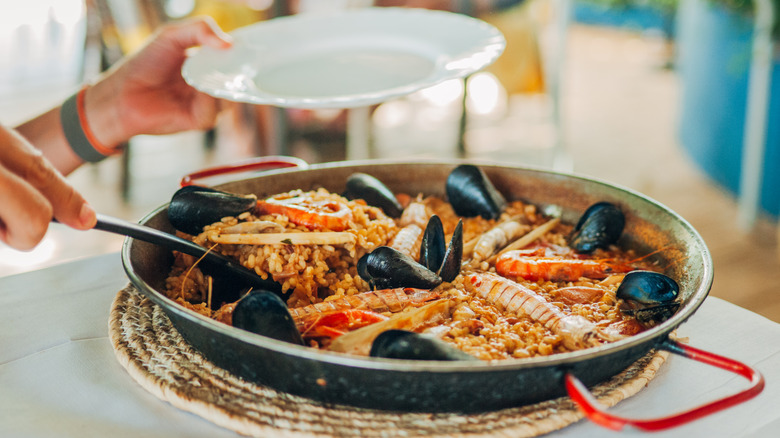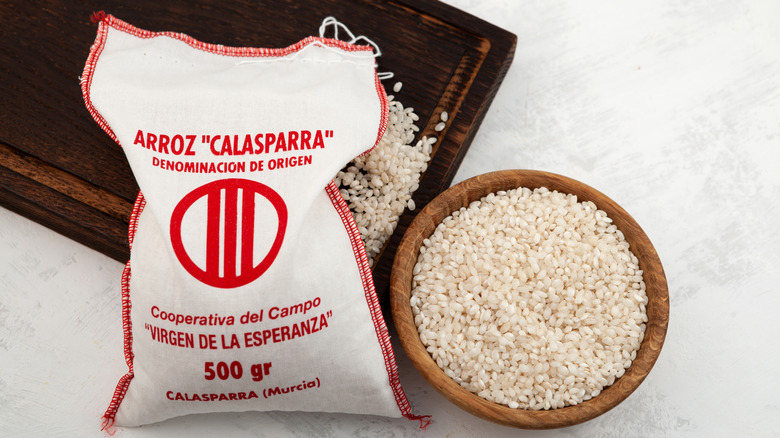What To Use In Paella If You Don't Have Bomba Rice
Paella is a dish steeped in luxury. The salty seafood, the slightly sweet, earthy saffron, and the puffy rice all come together to form a plate that has been one of the world's most iconic dishes since its inception approximately 600 years ago. If you're entertaining guests, paella can be an impressive show-stopper, but what happens if you don't have access to the all-important Bomba rice?
Bomba rice is generally seen as a tough rice to find outside of Spain — or at least, to find without breaking the bank, since it's a low-yield crop that's considered tough to cultivate. Luckily, Alex Bujoreanu, executive chef and owner of R.AIRE restaurant in The Hamptons, spoke to Food Republic to give guidance on how to navigate this obstacle so that only those with the most finely-tuned palates will know the difference.
"If you can't find Bomba rice," Chef Bujorneau said, "then the best alternative rice varieties would be Calasparra, Cebolla, and La Perla." However, he cautioned that most of these are not one-to-one alternatives: "Calasparra rice has a lower level of flavor absorption [while] Cebolla rice requires more liquid than Bomba rice." He recommended La Perla rice, which he says closest mirrors Bomba in terms of liquid ratio, flavor, and texture.
There are other options, of course. Bujoreanu informed us, "A non-rice alternative would be fideos (short cut pasta) from Catalonia." He went on to explain that these noodles, called fideus in Catalonian, "absorb the flavors similar to Bomba rice and will require less liquid (1:1 ratio)." Just bear in mind that it will not be able to achieve the socarrat, or bottom crust, that makes paella one of the most challenging dishes to make from scratch.
How to cook your Bomba substitute
One of the attributes that sets Bomba apart is its liquid absorption. Bomba rice absorbs three and a half to four cups of water to one cup of rice, which is what gives it its unique texture. The one variety most similar in this regard is Calasparra rice, which has a three-to-one ratio. Like Bomba rice, Calasparra expands along the width, rather than the length, resulting in plump, rich grains ready to absorb the juices of the paella.
If you're going to try your hand at some of these Bomba alternatives, Chef Alex Bujoreanu explained that you will have to make some adjustments. "Most rice alternatives have a higher level of absorption and will require more liquid when cooking with the exception of Arborio rice," he said. "However, the texture of Arborio rice will result in a creamer finish compared to Bomba rice."
Some find the texture of Arborio rice in paella to be too gummy or mushy, but others find it to be an acceptable substitute, with a notable example being Ina Garten, who always makes sure to have a supply on hand in order to cook her lobster paella and wild mushroom risotto. Chef Bujorneau also explained that most alternatives have a shorter cooking time than Bomba rice, with the exception, once again, being La Perla, which he considers the only alternative with a similar cooking time to Bomba.


